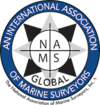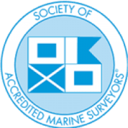I don't know a ton about the 232 Gulfstream but know some about Grady White's in general. I believe it was 1997 where they switched over from marine grade plywood to Greenwood XL, which is supposed to be much better at resisting mold/rot from water intrusion. With you looking at a 2005/2006 year, you shouldn't have as much concern as the older years but I personally like to have a surveyor/inspector look over every boat that I purchase. The reasons for doing so would be that it's relatively inexpensive to hire one, they can take moisture readings inside the hull for you with a moisture reader to tell you if you've got water intrusion, they can check over the motor for things like compression, can do a leak down test, they can scope the inside of the motor for corrosion issues and most have years, if not decades of experience looking over boats. In regards to the motor selection, Yamaha F225's and even some of the F250's in that vintage can, and do have a dry exhaust corrosion issue that you can look up on Google. But it looks like the maximum horsepower for the years you're looking at is 400 hp total, so the most you could run for twin's would be twin 200's. It's up to you if you'd like to run a single main motor or twin's, the 232's had options for either and you'll see some with a single main whereas others had twin's. I personally would rather have a single main and possibly a kicker motor for redundancy in the event of a motor failure and that's going to cost you a bit less than having two main motors. Especially when in terms of maintenance and upkeep and just the purchase price overall.
If you do go with a single motor though, a good deal of them had Yamaha 250's on them, which some still had the dry exhaust corrosion issue. The gist of it from what I've read is that Yamaha tried to save weight on their outboards in the early to mid 2000's and so they added lighter weight exhaust components, but in doing so they made it easier for the dry exhaust to corrode the exhaust tubing as well as other exhaust/mechanical parts. So the dry exhaust can eat through the tubing as well as other parts of the motor if you wait too long to take care of it. There's a ton of info on Google about it, so I won't bore you to death but that would be on the top of my concern list about a boat of that vintage, if you're looking at one with those motors. But as said earlier, I'd pay a competent marine surveyor to look everything over so you know what you're getting yourself into. The kit for the dry exhaust corrosion issue is about $600, combined with the labor to fix it and you're looking around $2k total per engine to do, if you catch it early enough. While I'd rather not spend the $2k if I don't have to, it's much better than having to buy a new motor or powerhead. Before I bought my 2004 GW 228 Seafarer, I looked at at least 3-4 others, of which a couple had the Yamaha 225's and at least one had the dry exhaust corrosion issue. It's not a huge problem if you catch it early enough as stated above, and if you can work that into the selling price then it can come out in your favor oftentimes. I liked the 228 Seafarer better than the 232 because the floor is all one level, it's a narrower boat, weighs less and I liked the cabin design much better than the 232's bunk bed style cabin. Depending on the size of the people, you might be able to get two adults on the bottom portion of the cabin area without one having to sleep on the bunk bed portion. Lastly, a 232 Gulfstream has a 9'3" beam, of which I've heard certain states require a special "wide load" permit when trailering one. Just something else to think about. Here's a link about the dry exhaust corrosion issue as well as a couple of sites for certified marine surveyors. What's your price range for purchasing the 232?
Owners of some Yamaha outboards are incensed at having to pay thousands to repair their relatively low-hour engines.

www.boatus.com
NAMSGlobal members are marine surveyors who inspect, and provide a broad variety of consulting services for the maritime industry. Our members are certified based on their knowledge and experience, with designations for: Yachts and Small Craft, Cargo, and Hull and Machinery (including Fishing Vessel

www.namsglobal.org
Bubble introduces a new way to build a web application. It’s a no-code point-and-click programming tool. Bubble hosts all applications on its cloud platform.

www.marinesurvey.org





